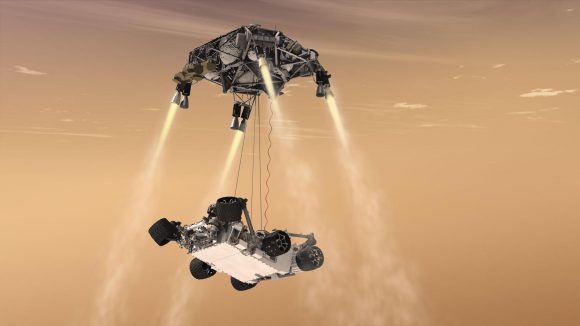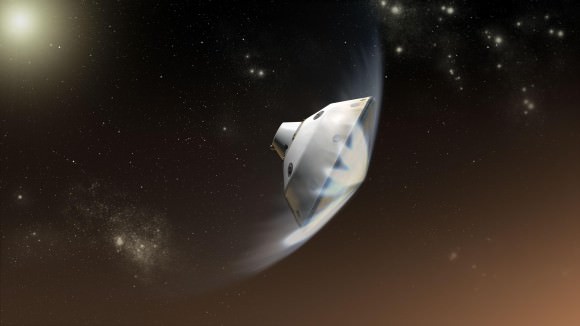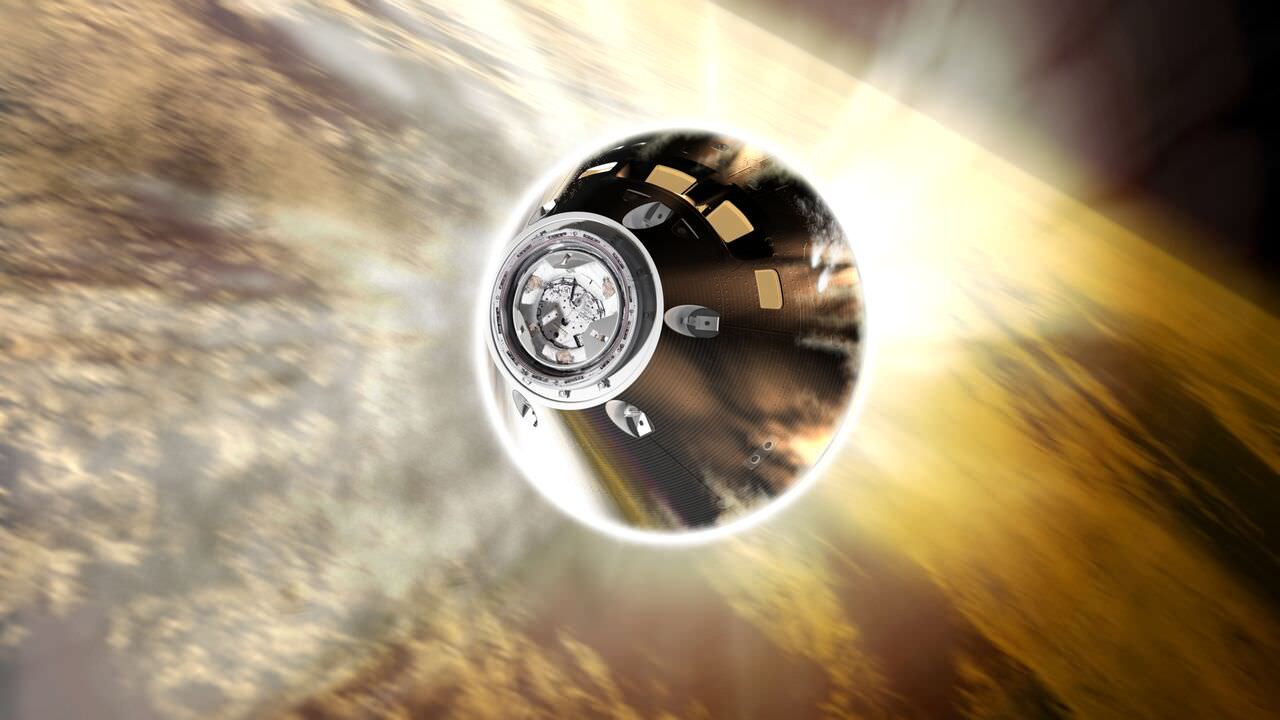One of the most common features of space exploration has been the use of disposable components to get missions to where they are going. Whether we are talking about multistage rockets (which fall away as soon as they are spent) or the hardware used to achieve Entry, Descent and Landing (EDL) onto a planet, the idea has been the same. Once the delivery mechanism is used up, it is cast away.
However, in so doing, we could be creating a hazardous situation for future missions. Such is the conclusion reached by a new study from the Finnish Meteorological Institute in Helsinki, Finland. With regard to the use of Entry, Descent and Landing (EDL) systems, the study’s author – Dr. Mark Paton – concludes that jettisoned hardware from missions to Mars could create a terrible mess near future landing sites.
Dr. Mark Paton is a planetary research scientist who specializes in the interaction between the Martian atmosphere and its surface. As such, he is well-versed in the subject of EDL systems that are designed to land missions on Solar System bodies that have atmospheres. This is certainly a going concern for Mars, where landers and rovers have relied on various means to get to the surface safely.
Consider the Curiosity rover, which used a separate EDL system – known as the Sky Crane – to land on Mars in 2012. As the first EDL system of its kind, the Sky Crane was a essentially a rocket-powered backpack mounted on top of the rover. This system kicked in after Curiosity separated from its Descent module (which was slowed by a parachute) and used rockets to slow the rover’s decent even further.
Once it was sufficiently close to the surface, the Sky Crane lowed the rover to the ground with tethers measuring 6.4 meters (21 ft) long. It then detached and landed a safe distance away, not far from the Descent module’s heat shield, backshell, and parachute landed. These jettisoned bits were all photographed from orbit by the MSL’s HiRISE instrument a day after the landing.
This system is also being planned for use by the Mars 2020 rover. And beyond rockets and parachutes, there are also advanced concepts like the Hypersonic Inflatable Aerodynamic Decelerators (HIADs). As part of NASA’s Fundamental Aerodynamics Hypersonics Project, the HIAD is an attempt to develop what are known as Inflatable Reentry Vehicle (IRV) systems which do away with heat shields.
Unfortunately, this kind of technology does not address another major concern – which is the accumulation of spent hardware components on the surface of a planet. In time, these could pose risks for future missions, mainly because they have the potential of being blown around and cluttering up other (and future) landing sites that are located not far away.

As Dr. Paton indicated in an interview with Seeker columnist (and Universe Today alumnist) Elizabeth Howell:
“Currently available landing systems, using heat shield and parachutes, might be problematic because jettisoned hardware from these landers normally land within a few hundred meters of the lander. I would imagine a sample return mission would not jettison its parachute in close vicinity of the target sample or the cached sample. The parachute might cover the sample, making its retrieval a problem. Landers using large parachutes or other large devices probably pose the greatest risk as these could be easily blown onto equipment on the surface, damaging or covering it.”
For the sake of his study, Dr. Paton relied on 3D computer modelling (using the space flight simulator Orbiter) to examine different types of ELD systems. He then conducted meteorological measurements to determine wind speeds and direction within the Martian Planetary Boundary Layer (PBL), in order to determine their influence on the distribution of jettisoned components across the surface of Mars.
What he found was that winds speeds within the Martian PBL were sufficient enough to blow around certain types of EDL systems. This included parachutes – a mainstay of space missions – as well as next-generations concepts like the HIAC. Basically, these components could be blown onto prelanded assets, even when the lander itself has touched down several kilometers away.
This could play havoc with robotic missions that have sensitive equipment or are attempting to collect samples for return to Earth. And as for crewed missions – such as NASA’s proposed “Journey to Mars”, which is expected to take place in the 2030s – the results could be even worse. Crew habitats, which will be part of all future crewed missions, will rely on solar panels and other devices that need to be free of clutter in order to function.

As such, Dr. Paton advises that future missions be designed so that the amount of hardware they leave behind is minimized. In addition, he advises that any future missions will need to take into account meteorological measurement to make sure that jettisoned components are not likely to blow back and interfere with missions in progress.
“For new landing systems, a detailed trade-off analysis would be required to determine the best way to mitigate this problem,” he said. “To be sure that the wind is blowing away from any landed assets, the winds in the lower few kilometers of the atmosphere would ideally need to be measured close to the time of the lander’s expected arrival.”
As if planning missions to Mars wasn’t already challenging enough! In addition to all the things we need to worry about in getting there, now we need to worry about keeping our landing sites in pristine order. But of course, such considerations are understandable since our presence on Mars is expanding, and many key missions are planned for the coming years.
These include more robotic rovers in the next decade – i.e NASA’s Mars 2020 rover, the ESA’s Exomars rover, and the ISRO’s Mangalyaan 2 rover – an even NASA’s proposed “Journey to Mars” by the 2030s. If we’re going to make Mars a regular destination, we need to learn to pick up after ourselves!
Further Reading: Acta Astronautica,
Honorable Mention: Elizabeth Howell – Seeker

